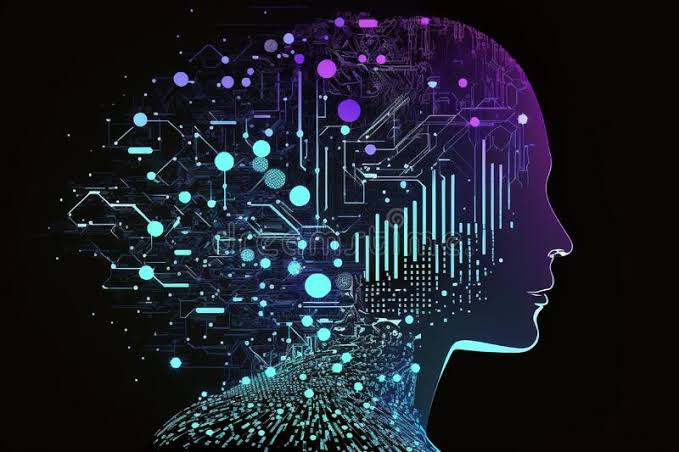Future disruption in the Web3 sector may be on the horizon as AI technology develops over time.Artificial intelligence (AI) has been a term used mostly by laypeople for many years.
An increased interest in generative AI, a particular sort of AI, has been sparked by recent technical innovations and achievements. Generative AI centres on analysis, automation, and content development due to its unmatched capacity to produce original, distinctive content that supports human creativity. How generative AI integrates into the lingo of all practical applications is an interesting question.
According to a BCG blog, the generative AI market will increase its share of the overall AI market to 30% by 2025, or $60 billion of the addressable AI market.
In this article we’ll talk on how to utilise the generative AI, how to leverage Ai, how tgenerative Ai is advancing the web 3 sector , potential dangers of generative Ai in web 3
Utilising the potential of AI: generative AI
Machine learning’s subset of “generative AI” creates new material using neural networks. Generative AI uses vast datasets to create fresh, distinctive, and occasionally unpredictable informational content, in contrast to other AI systems that are taught to carry out certain tasks.
Generative adversarial networks (GANs) are among the most widely used generative AI models. GANs are made up of a generator and a discriminator neural network. The discriminator determines if the new content is authentic or fraudulent while the generator produces fresh content. Over time, the quality of the material provided by these networks will improve as they continue to learn from one another.
Generative AI has the power to fundamentally alter how we use AI, from creating realism-like synthetic data for training AI models to curating specialised content for clients. As a result, over time, the quality of the content created by GANs has improved. These days, GANs can create images and movies that are almost indistinguishable from the originals.
Businesses like H&M and Nike, for example, have used generative AI to create new clothing designs in order to expedite and minimise the cost of the design process. Thanks to artificial intelligence (AI) technology, designers may now present their collections in a virtual environment. In the last five years, adoption of AI has almost doubled, and investment in AI is growing quickly, according to a 2022 McKinsey survey. A wide variety of employment functions could be changed by generative AI technologies like ChatGPT and DALL-E (a tool for AI-generated art).
Pragmatic instances of leveraging AI
Efficiency and creativity have grown as a result of the use of ChatGPT and DALL-E in practical situations. Customers can now get rapid assistance thanks to the integration of ChatGPT by well-known companies like Microsoft and Google into their customer care systems.
IKEA, a retailer of furniture, has used AI to generate 3D models of their products so that buyers may see the furniture in their homes before purchasing. Lexus, a car manufacturer, also used AI to create fantastical car designs based on textual descriptions, showcasing the technology’s capacity to support creative design. This serves to illustrate the possibilities of generative AI technologies like ChatGPT and DALL-E.
How is generative AI advancing the Web3 sector?
Web3 is being empowered by generative AI through NFTs (such as with branding and media with NFT arts), blockchain gaming (such as with asset generation, narrative and story designs, as well as avatar modelling creation), the metaverse (with 3D ecosystems, multiple assets, and texture generation), and Web3 development (such as with code generation, audits debugging, and workflow automation). Online search is naturally improved by a variety of generative AI technologies in Web3.
For instance, the most recent ChatGPT connection with Bing from Microsoft provides a better and more user-friendly chat experience. Additionally, thanks to its AI cloud, Generative AI fits within the Web3 domain. While conducting a web search, it facilitates data filtering and reduces the challenges of SEO content. You may streamline and innovate dynamic game features like dialogues and avatars by utilising Generative AI text tools.
Additionally, generative AI promotes the creation of NFT art using tools like CryptoPunks, Lost Poets, Ringers, and Chromie Squiggle. The AI tools use several iterations, levels of randomness, and input a set of rules (such as colour range and patterns) to create artwork within the predetermined parameters.
What potential dangers could generative AI in Web3 provide, and how can you avoid them?
The hazards associated with generative AI are similar to those associated with every coin, therefore you must exercise caution when using the technology. The following are some possible dangers of generative AI in Web3:Infringement on intellectual property and problems with copyrighted content
Downsides of AI in web 3
1. AI-generated content’s accuracy and quality
2. Blockers in the upcoming blockchain runtime generation’s architecture
3.sensitive data-based content and privacy issues
4exploitation of generative AI for bad
5.biased results from algorithms
You can combat these risks by:
1.Artificial intelligence-based content filtering systems like Google’s Perspective API or Two Hat’s Community Sift
2.Techniques that protect data privacy include federated learning, homomorphic encryption, and anonymization
3.Credibility-enhancing representative datasets, such as ImageNet and MNIST, are used to train the generative AI algorithms.
4. AI-based tools for detecting fraud, such as Fraud.Net, Kount, and NICE Actimize
5.Fairness and accountability metrics for AI content analysis
6.Establish guidelines and standards for the usage of generative AI in Web3
Conclusively, machine learning is being integrated into Web3 organisations’ operations thanks to Generative AI’s automation, which supports data computation. People are consequently willingly adopting upcoming AI developments.
Financial technology, environmental technology, fantasy sports, online gaming, interoperability trading, healthcare, the arts, and hospitality are just a few of the transformative industries that are being transformed by experts in the field of generative AI. It might also improve how Web3 has implemented generative AI. Future disruption in the Web3 sector may be on the horizon as AI technology develops over time.
.

